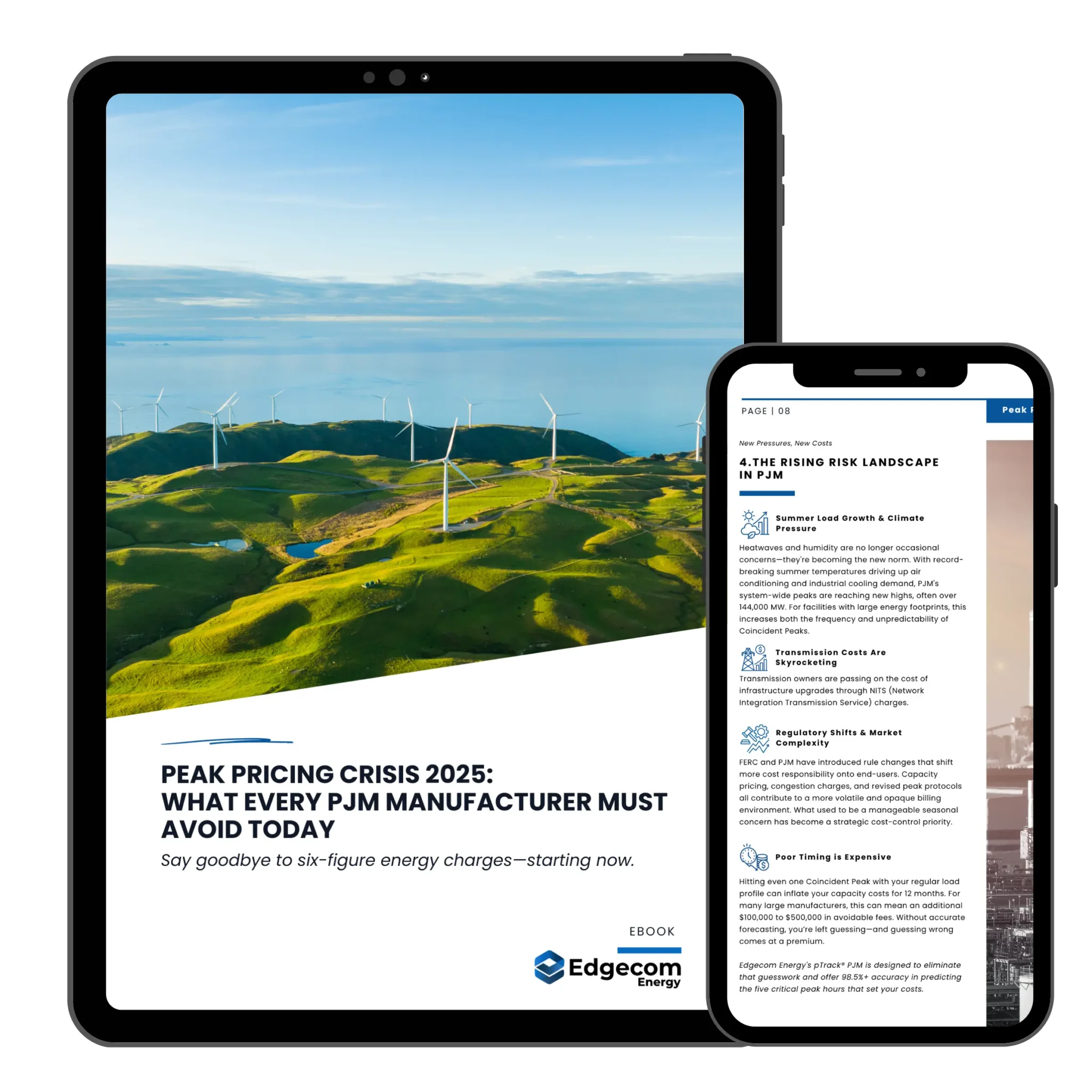The ICI program has been enabling customers to save on their GA costs for almost a decade. In the beginning, when only very large, 5MW+ consumers could participate, predicting peaks was easy. What was once an easy-to-manage program now requires Data Science and AI expertise to be successful. In 2020, with the increased number of ICI participants and embedded energy resources like generators and battery storage coming onto the grid, predicting the top 5 coincident peak hours is increasingly difficult. While the IESO Power Data website displays Ontario Demand data, attempting to use this as a top 5 peak hour prediction is very risky. The IESO projected hourly data is only updated a few times a day, often after the peak has already passed. A more sophisticated method of peak predictions is required.
Read on to learn why AI is a necessity for predicting the Top 5 Peaks.
Reason #1: The model needs to be purpose-built to predict peaks
The IESO’s Ontario Demand projection is built to ensure there is enough supply on the grid at all times. Because of this, Ontario’s Demand projection from the IESO tends to overestimate electricity demand, meaning that relying on it to predict peaks will lead to more curtailment events. Additionally, the IESO model is only updated a few times a day. As embedded generation and curtailment activity on the grid change the demand, this may not be reflected in the projection.
In comparison, the pTrack™ model is built specifically to predict the Top 5 peaks using deep learning algorithms. pTrack™ works in two ways. First, it predicts the percent chance any given day has of becoming a peak day. Second, it predicts which hour of the day the peak hour will occur and what the demand will be for the hour. Combining deep learning and large data sets allows pTrack™ to predict the coincident peak hour with high accuracy. The end result is more accurate predictions and less unnecessary curtailments.
Reason #2: Deep Learning can learn how others are curtailing
Weather and embedded generation, and curtailment by Class A consumers are the biggest determinants for peak day predictions. As more Class A consumers curtail, they reduce the Ontario peak (this is what the ICI program was designed to do) and bring the peaks throughout the year closer together. Predicting the total curtailment that occurs in Ontario is difficult because each Class A consumer makes their decision independently.
This is where AI comes in, by analyzing the Ontario grid in real-time, the deep learning model can learn how much and when different kinds of consumers curtail. This data is then used to improve the model’s prediction of potential peak day events.

Reason #3: Curtailment amounts change every season and every year
Understanding how much Class A customers curtail in a given year is important. The chart below shows the different amounts of curtailment which occur during different seasons. The deep learning model can assess this amount at the beginning of each season and improve its estimate as the season progresses.

Reason #4: There is too much data to interpret, deep learning is a requirement
Thousands of data points are required to accurately predict peaks. Weather data could be analyzed and used to predict peaks more easily in the past. But, as more Class A consumers improve their peak predictions, this no longer works. Class A customers use automated curtailments and DER’s like natural gas generators and batteries to reduce their load. Additionally, households and businesses are beginning to implement smart home devices which can change their electricity profile. Embedded solar generation and other DERs are changing the supply of electricity on the grid.
In the past, when the supply and demand drivers were simpler, predicting peaks with a multivariable regression model (i.e. excel) was easily achievable. With the advent of new technologies, more dynamic customers, and more data available, deep learning AI becomes indispensable when it comes to predicting the Top 5 peaks.
pTrack™ uses real-time analysis of solar output and many other weather, environmental and economic data points to predict peaks. The only way to analyze this stream of data is with AI.

Reason #5: Deep learning AI works around the clock, and never takes sick days or time off – especially not during the summer
In the past, the Top 5 peaks would only occur during the hot summer months, during business hours. This is because industrial electricity use made up a larger portion of Ontario’s demand. Industrial production has decreased and the province has shifted to a more service-based economy. Additionally, the remaining industry has become more energy efficient. This has led to more peaks occurring during evening and weekend hours since household electricity consumption is making up a larger share of Ontario’s demand.
This leads to a higher chance of peaks occurring on weekends, in the late evenings, and in the winter. To accurately predict these peaks without AI would mean staying on top of curtailments 24/7 for hundreds of days a year.
The AI model resolves this issue as it automatically updates every 5 minutes. All of the data required is automatically obtained and analyzed and notifications are sent as required.
Taking this one step further, automated curtailment dispatch through Edgecom Energy’s API and custom hardware is allowing some Class A customers to fully automate their curtailments. A signal is sent to their devices automatically and curtailment is completed without any input from the facility manager or energy manager.

